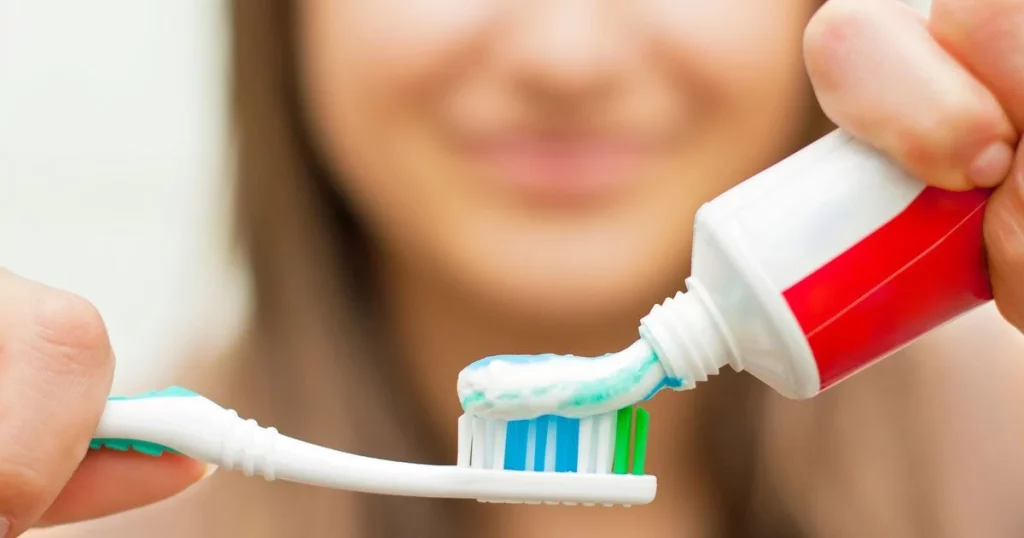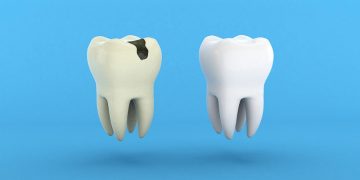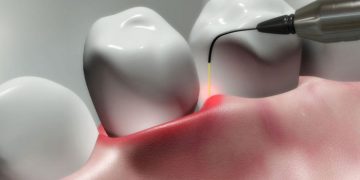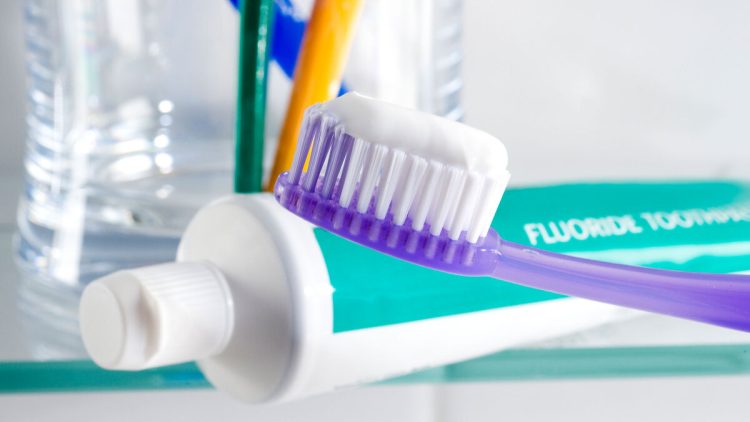Fluoride toothpaste is a staple of daily oral care for millions of people worldwide. The active ingredient fluoride has long been recognized for its ability to protect teeth from decay, strengthen enamel, and support overall oral health. However, despite its widespread use, there are still many misconceptions and questions surrounding its safety, effectiveness, and long-term benefits.
This article aims to provide a thorough understanding of fluoride toothpaste, covering its history, how it works, the scientific evidence supporting its benefits, and how to use it effectively. By the end of this article, you will have a deep appreciation for why fluoride toothpaste is considered one of the most important tools for maintaining optimal oral health.
1. Introduction to Fluoride and Fluoride Toothpaste
1.1 What is Fluoride?
Fluoride is a naturally occurring mineral found in the earth’s crust, water, soil, and various foods. It is a compound made up of the element fluorine, which has strong bonding properties with calcium. In dental care, fluoride is used to enhance the remineralization of teeth and prevent tooth decay.
The mineral fluoride works in several ways to protect teeth, primarily by aiding in the process of remineralization, where essential minerals (calcium and phosphate) are deposited back into the enamel, thus strengthening it and making it more resistant to acid attacks. Fluoride also inhibits the growth of harmful bacteria in the mouth, preventing the formation of plaque and cavities.
1.2 History of Fluoride in Dentistry
Fluoride’s dental benefits were first recognized in the early 20th century. In the 1930s, researchers in Colorado discovered that people living in areas with naturally high levels of fluoride in their drinking water had fewer cavities. This led to the theory that fluoride could help prevent tooth decay. In the 1940s, fluoride was added to public water supplies in certain cities, resulting in a significant reduction in dental cavities.
In the 1950s, fluoride toothpaste was introduced to the market. It quickly became a common dental product, and over time, numerous studies have confirmed its effectiveness in reducing tooth decay and improving oral health.
1.3 What is Fluoride Toothpaste?
Fluoride toothpaste is a type of toothpaste that contains fluoride as its active ingredient, typically in the form of sodium fluoride, stannous fluoride, or sodium monofluorophosphate. These fluoride compounds have been carefully formulated to provide a stable and effective dose of fluoride to the teeth, usually in concentrations ranging from 1000 to 1500 parts per million (ppm) for regular toothpaste.
In addition to fluoride, toothpaste also contains other ingredients, including abrasives (such as calcium carbonate), detergents (such as sodium lauryl sulfate), flavoring agents (such as menthol), and binders. The primary purpose of fluoride in toothpaste is to protect teeth from decay, strengthen enamel, and reduce the risk of gum disease.
2. How Fluoride Toothpaste Works
2.1 Remineralization of Enamel
The enamel of your teeth is the hard, outer layer that protects against decay. Over time, the enamel can be weakened by acids produced by bacteria in the mouth, which feed on sugars in food. This process, known as demineralization, can lead to cavities if the enamel is not properly repaired.
Fluoride toothpaste helps to counteract this process by promoting remineralization. When you brush your teeth with fluoride toothpaste, the fluoride ions are absorbed into the enamel and work to replace lost minerals, such as calcium and phosphate. This process strengthens the enamel and makes it more resistant to further acid attacks.
2.2 Strengthening Enamel
Fluoride makes enamel more resistant to the acids produced by bacteria in the mouth. It does so by incorporating fluoride ions into the structure of the enamel during the remineralization process, making it more durable and less susceptible to acid erosion. The fluoride-enriched enamel is also more resistant to decay and cavities.
2.3 Antibacterial Effects
Fluoride also has antibacterial properties. When fluoride comes into contact with the bacteria in dental plaque, it interferes with the bacteria’s ability to metabolize sugars and produce acids. By disrupting the metabolic activity of bacteria, fluoride helps to reduce plaque buildup and the associated risk of tooth decay and gum disease.
2.4 Reducing Sensitivity
Fluoride toothpaste is often recommended for people with tooth sensitivity. Sensitive teeth occur when the enamel has worn down or the gums have receded, exposing the underlying dentin. This can cause pain or discomfort when consuming hot, cold, or sweet foods. Fluoride helps to reduce sensitivity by promoting the remineralization of exposed dentin and creating a barrier that protects nerve endings.
2.5 Enhancing the Effectiveness of Other Oral Hygiene Practices
Using fluoride toothpaste in conjunction with regular brushing, flossing, and professional dental cleanings enhances the effectiveness of these practices. While brushing alone helps to remove plaque and food particles, fluoride toothpaste provides an additional layer of protection by strengthening enamel and neutralizing acids that cause decay.

3. The Benefits of Fluoride Toothpaste
3.1 Prevention of Tooth Decay
The most significant benefit of fluoride toothpaste is its ability to prevent tooth decay. Numerous studies have shown that fluoride reduces the incidence of cavities by enhancing the remineralization of enamel and making it more resistant to acid attacks.
According to the Centers for Disease Control and Prevention (CDC), fluoride toothpaste can reduce the incidence of dental cavities by up to 25% compared to brushing with non-fluoridated toothpaste. Fluoride toothpaste is particularly beneficial for children, as it helps to strengthen developing teeth and prevent early childhood cavities.
3.2 Reduced Plaque and Tartar Buildup
Fluoride toothpaste also helps to reduce plaque buildup on the teeth. Plaque is a sticky film of bacteria that forms on teeth after eating. If not removed through brushing, plaque can harden into tartar, which can only be removed by a dentist or dental hygienist. Fluoride’s antibacterial properties inhibit the growth of plaque-forming bacteria, preventing tartar buildup and reducing the risk of gum disease.
3.3 Protection Against Gum Disease
Fluoride toothpaste plays a crucial role in protecting the gums by preventing plaque buildup, which can lead to gingivitis (the earliest stage of gum disease). Plaque irritates the gums and causes them to become inflamed and bleed. By preventing plaque, fluoride toothpaste helps maintain healthy gums and prevents gum disease.
3.4 Strengthening and Protecting Teeth from Acidic Foods and Drinks
Acidic foods and drinks, such as citrus fruits, soft drinks, and vinegar, can erode enamel over time. Fluoride toothpaste helps to protect enamel by strengthening it, making it more resilient to the erosive effects of acids. This protection is particularly beneficial for people who consume highly acidic foods or beverages regularly.
3.5 Prevention of Tooth Sensitivity
As mentioned earlier, fluoride toothpaste can significantly reduce tooth sensitivity. Sensitivity occurs when the enamel wears down or gums recede, exposing the dentin, which contains nerve endings. Fluoride helps by remineralizing the exposed dentin and forming a protective layer, which helps to reduce sensitivity and discomfort when eating or drinking hot, cold, or sweet foods.
3.6 Long-Term Oral Health Benefits
The long-term use of fluoride toothpaste contributes to overall oral health by ensuring the teeth remain strong and resistant to decay. Regular use of fluoride toothpaste throughout life can significantly reduce the risk of cavities, gum disease, and tooth loss, leading to better oral health outcomes in the long run.
3.7 Cost-Effective Oral Care Solution
Fluoride toothpaste is a cost-effective solution for preventing tooth decay and maintaining oral health. By reducing the need for more expensive dental treatments, such as fillings, root canals, and crowns, fluoride toothpaste helps save money in the long run. Preventing tooth decay with fluoride toothpaste is far less costly than treating cavities and other oral health problems.
4. The Safety of Fluoride Toothpaste
4.1 Safety of Fluoride in Toothpaste
Fluoride is considered safe when used as directed in toothpaste. The fluoride concentrations in toothpaste are carefully regulated, with most over-the-counter options containing between 1000 to 1500 ppm (parts per million) of fluoride. This level is effective in preventing tooth decay but does not pose a significant risk of toxicity when used in small amounts.
Swallowing excessive amounts of fluoride toothpaste, especially by young children, can cause fluorosis (a condition that affects the appearance of tooth enamel). To minimize the risk, it is important to use only a pea-sized amount of fluoride toothpaste and supervise young children while brushing to ensure they do not swallow it.
4.2 Fluoride and Children’s Teeth
Fluoride toothpaste is particularly beneficial for children, as it helps to strengthen developing teeth and prevent cavities. The American Dental Association (ADA) recommends that children under the age of 3 use a tiny smear of fluoride toothpaste (about the size of a grain of rice) and children aged 3 to 6 use a pea-sized amount. Parents should supervise their children while brushing to ensure they are using the correct amount of toothpaste and avoid swallowing it.
4.3 Overuse of Fluoride
While fluoride is beneficial for dental health, overuse can lead to dental fluorosis, which manifests as white spots or streaks on the teeth. Fluorosis is most commonly seen in children who consume excessive fluoride while their permanent teeth are developing. To prevent fluorosis, it is important to use the correct amount of fluoride toothpaste and avoid swallowing it.
5. Choosing the Right Fluoride Toothpaste
5.1 Types of Fluoride Toothpaste
There are various types of fluoride toothpaste available, each designed to address specific oral health needs. Some of the most common types
include:
- Cavity Protection Toothpaste: Contains fluoride to prevent tooth decay and strengthen enamel.
- Whitening Toothpaste: Combines fluoride with mild abrasives to remove surface stains and whiten teeth.
- Sensitivity Toothpaste: Contains fluoride and compounds that reduce tooth sensitivity by blocking nerve pathways in the dentin.
- Tartar Control Toothpaste: Contains fluoride and additional agents to prevent the buildup of tartar.
5.2 Selecting the Right Fluoride Toothpaste for Your Needs
When selecting a fluoride toothpaste, consider your specific oral health needs. If you are prone to cavities, choose a toothpaste that focuses on cavity protection. If you have sensitive teeth, look for toothpaste formulated for sensitivity relief. If you want to whiten your teeth, choose a toothpaste with whitening properties.
Always choose a toothpaste that is recognized by reputable organizations such as the American Dental Association (ADA), which ensures that the product has been tested for safety and effectiveness.
6. Conclusion
Fluoride toothpaste is a vital tool in maintaining oral health. Its ability to prevent tooth decay, strengthen enamel, reduce sensitivity, and protect against gum disease makes it an essential part of daily oral care. By understanding the benefits of fluoride toothpaste and using it correctly, individuals can significantly improve their oral health and reduce the risk of dental problems in the future.
Through the regular use of fluoride toothpaste, combined with a balanced diet, proper brushing techniques, and routine dental visits, you can maintain strong, healthy teeth for a lifetime. Fluoride toothpaste not only offers immediate protection but also ensures long-term oral health benefits, making it one of the most cost-effective and important products in oral care.













































Discussion about this post